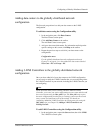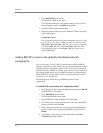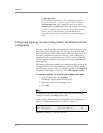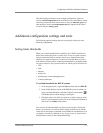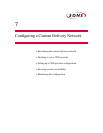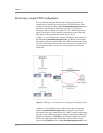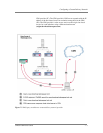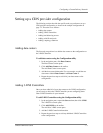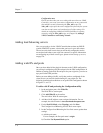
Configuring a Content Delivery Network
3-DNS
®
Administrator Guide 7 - 1
Introducing the content delivery network
A content delivery network (CDN) is a network of clusters that includes
devices designed and configured to maximize the speed at which a content
provider's content is delivered. The purpose and goal of a content delivery
network is to cache content closer, in Internet terms, to the user than the
origin site is. Using a CDN to deliver content greatly reduces wide area
network (WAN) latency so the content gets to the user more quickly, and the
origin site servers are not overloaded and slowed by requests for content.
The fundamental WAN traffic distribution mechanism in all CDNs that we
know about is DNS.
Using the 3-DNS Controller in a CDN
The following features make the 3-DNS Controller a logical choice for the
wide-area traffic management in a CDN.
◆ CDN switching
CDN switching is the functionality of the 3-DNS Controller that allows a
user to delegate global traffic to a third-party network. The two features
of the 3-DNS Controller that make CDN switching possible are:
• Geographic redirection
The 3-DNS Controller uses the Topology load balancing mode to
redirect DNS requests based on location information derived from the
DNS query message. You can set up wide IPs so that the 3-DNS
Controller delegates DNS queries either to a data center, by
responding with A records, or to a CDN provider, by responding with
a CNAME record.
• CDN providers
We have partnered with several CDN providers to facilitate usage of
CDNs. To take advantage of these content delivery partnerships, you
can designate a pool type CNAME on the 3-DNS Controller so that
the 3-DNS Controller redirects requests to a CDN provider’s name
servers rather than to a grouping of virtual servers. For a list of our
partner CDN providers, click CDN Providers on the 3-DNS
Controller home screen.
◆ Resource monitoring, limits, and thresholds
The 3-DNS Controller has sophisticated monitoring screens so you can
quickly analyze the performance and availability of your network
resources. You can also set limits on physical and throughput resources
to ensure that your content is always available and none of your
resources are overtaxed.



